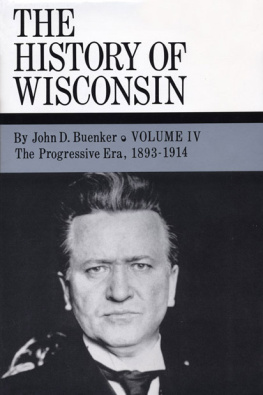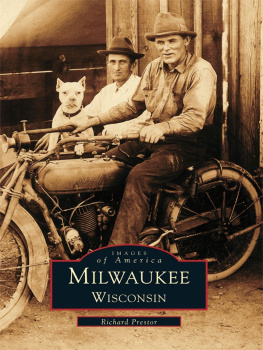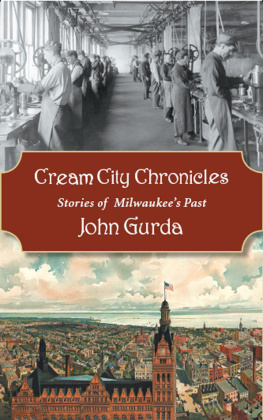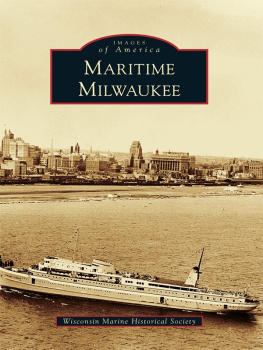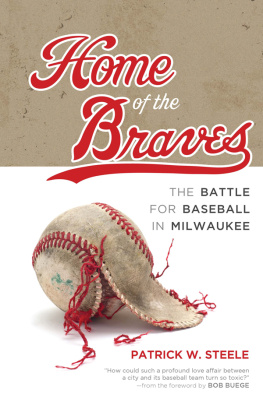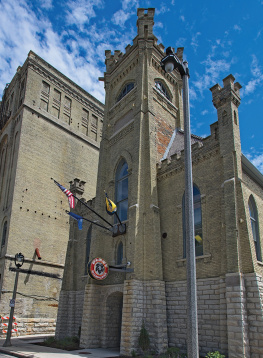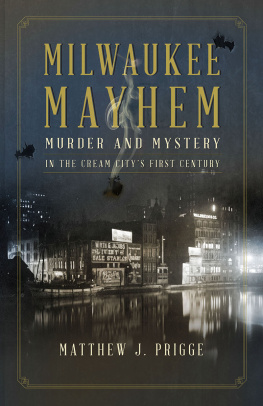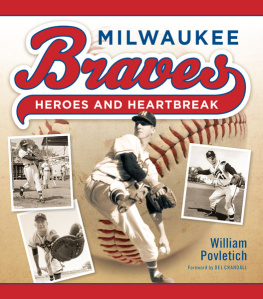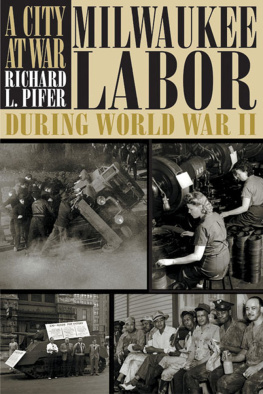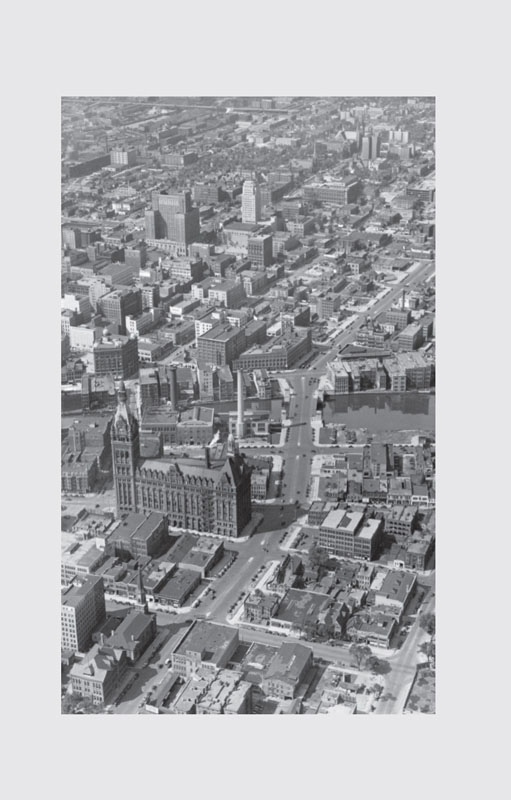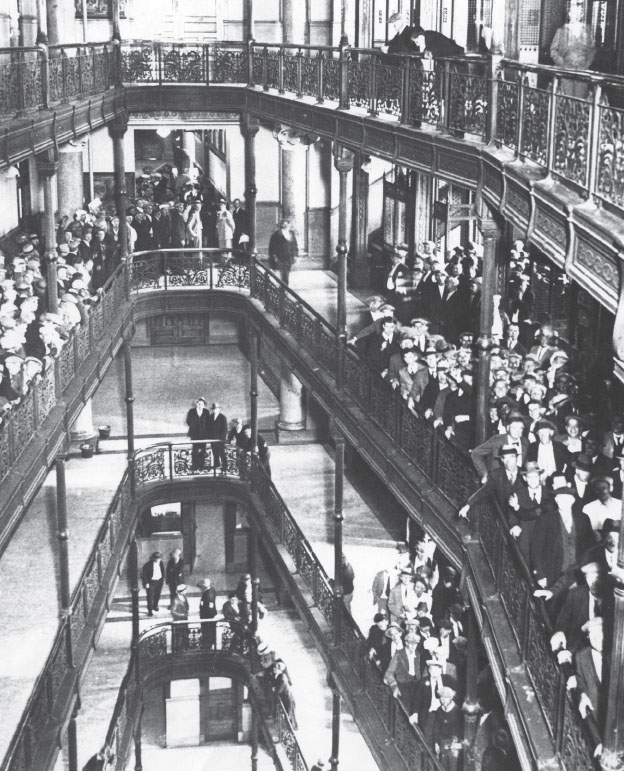MILWAUKEE IN THE 1930S
A Federal Writers Project City Guide

MILWAUKEE IN THE 1930S
A Federal Writers Project City Guide

Edited by
JOHN D. BUENKER WITH BEVERLY J. K. BUENKER
WISCONSIN HISTORICAL SOCIETY PRESS
Published by the Wisconsin Historical Society Press
Publishers since 1855
The Wisconsin Historical Society helps people connect to the past by collecting, preserving, and sharing stories. Founded in 1846, the Society is one of the nations finest historical institutions.
wisconsinhistory.org
Order books by phone toll free: (888) 999-1669
Order books online: shop.wisconsinhistory.org
Join the Wisconsin Historical Society: wisconsinhistory.org/membership
2016 by the State Historical Society of Wisconsin
E-book edition 2016
For permission to reuse material from Milwaukee in the 1930s: A Federal Writers Project City Guide (ISBN 978-0-87020-742-6, e-book ISBN 978-0-87020-743-3), please access www.copyright.com or contact the Copyright Clearance Center, Inc. (CCC), 222 Rosewood Drive, Danvers, MA 01923, 978-750-8400. CCC is a not-for-profit organization that provides licenses and registration for a variety of users.
Photographs identified with WHi or WHS are from the Societys collections; address requests to reproduce these photos to the Visual Materials Archivist at the Wisconsin Historical Society, 816 State Street, Madison, WI 53706.
Designed by Nancy Warnecke, Moonlit Ink
Front cover photo: WHI IMAGE ID 78588
20 19 18 17 16 1 2 3 4 5
Library of Congress Cataloging-in-Publication Data
Names: Buenker, John D., editor.
Title: Milwaukee in the 1930s : a Federal Writers Project City Guide / edited by John D. Buenker.
Description: Madison : Wisconsin Historical Society Press, 2016.
Identifiers: LCCN 2015034671 (print) | LCCN 2015046707 (e-book) | ISBN 9780870207426 (pbk. : alk. paper) | ISBN 9780870207433 (e-book) | ISBN 9780870207433 (e-book)
Subjects: LCSH: Milwaukee (Wis.)Guidebooks. | Milwaukee (Wis.)Tours. | Milwaukee (Wis.)History.
Classification: LCC F589.M63 .M55 2016 (print) | LCC F589.M63 (ebook) | DDC 977.5/95dc23
LC record available at http://lccn.loc.gov/2015034671
Downtown Milwaukee in 1932. HISTORIC PHOTO COLLECTION / MILWAUKEE PUBLIC LIBRARY
What would it be like to take an intensive tour of Milwaukee as it was during the late 1930sat the confluence of the Great Depression, the New Deal, and the run-up to World War II? That is precisely what the participants in the Federal Writers Project (FWP) did while researching their Guide to Milwaukee. The fruits of their labors were ready for publication by 1940, but, due to a perfect storm of happenstances, the finished product has not seen the light of dayuntil now.
Fortunately for us, the completed manuscript has been carefully preserved in the Wisconsin Historical Society Archives in Madison. Its potential value as a resource for historians, geographers, sociologists, architects, novelists, and students in high school, college, and graduate schoolas well as for those with an abiding interest in Milwaukees past as prologue to its present and futureseems boundless. Few people are as invested in preserving and reading about their own history as are the citizens and expats of the Cream City.
The FWP was established by Congress on July 27, 1935, as a component of the Works Project Administration (WPA). As such, it was a vital tool to provide work and income to the millions of Americans who were involuntarily unemployed during the Great Depression. Both the WPA and the FWP were designed as temporary agencies intended to stimulate the demand side of the Gross National Product (now called the Gross Domestic Product), which would, in turn, revitalize business investment and consumer spending. In popular parlance, it was called priming the pump. That strategy was the polar opposite of the trickle-down theory of prosperity that predominated during the pro-business New Era of the 1920s, and which, unfortunately, prevails in the present day.
All told, the WPA gave employment and income to more than eight million individuals between 1935 and 1943at which point American entry into World War II ended the unemployment crisis for most of the next three decades. The majority of WPA workers were engaged in labor-intensive, pick and shovel jobs, but the FWP employed almost entirely white-collar workers, especially those whose previous positions had required some type of writing skills. It was a component of New Deal arts programs known collectively as Federal One. At its zenith, the FWP engaged some 6,600 individuals, distributed proportionately among the forty-eight states, the District of Columbia, Alaska, and Puerto Rico. Its employees worked under the supervision of an editorial staff, whose members were already employed elsewhere. The agency also hired a number of field workers drawn from local unemployment rolls, many of whom had not even completed high school. Most field workers were relatively young, came from blue collar or lower-middle-class families, and previously had held some type of lower-level white-collar position.
Registering for unemployment benefits at Milwaukees City Hall during the Depression. WHI IMAGE ID 80339
The FWP was a launching pad for many who were to emerge as some of the countrys most celebrated authors, including Nelson Algren, Saul Bellow, John Cheever, Ralph Ellison, Zora Neale Hurston, Claude McKay, John Steinbeck, Studs Terkel, Eudora Welty, Richard Wright, and Frank Yerby. Among its most ambitious investigations was America Eats, headed by Bellow, Welty, and Algren, which explored the social and cultural implications of food and drink. The participants explored the origins of various American cuisinesas well as the evolution of regional specialtiesby attending church picnics, potluck suppers, local celebrations, festivals, holiday parties, and other venues at which food and drink were served. They gathered a voluminous amount of material but were unable to publish most of the results, due to some of the same problems that plagued the Milwaukee guide project: an eventual decline in interest and a lack of sustained funding. The University of Iowa Press published a sizeable portion of Algrens contribution in 1992. More recently, books by Pat Willard and Mark Kurlansky have incorporated some of the material from America Eats, but much more is still stored in various state archives around the country. These collections include anecdotes from ordinary Americans, histories of regional and familial cuisines, and a veritable cornucopia of recipes.
The biggest single collection of FWP materialsThe Federal Writers Project Papers, 19361940are housed in the archives of the University of North Carolina at Chapel Hill. They were collected and processed by W. T. Couch, longtime head of the UNC Press, part-time assistant and associate director of the FWP (19361937), and director of its southern region during 19381939. The collection includes life histories of some 1,200 persons, many of whom were African Americans, written by sixty project members and based upon one or more interviews with each subject. These life histories describe living and working conditions in Alabama, Arkansas, Florida, Georgia, Louisiana, Oklahoma, South Carolina, Tennessee, and Virginia during the Great Depression; they include ghost stories and local legends. Some of them were published in 1939 by UNC Press under the title


